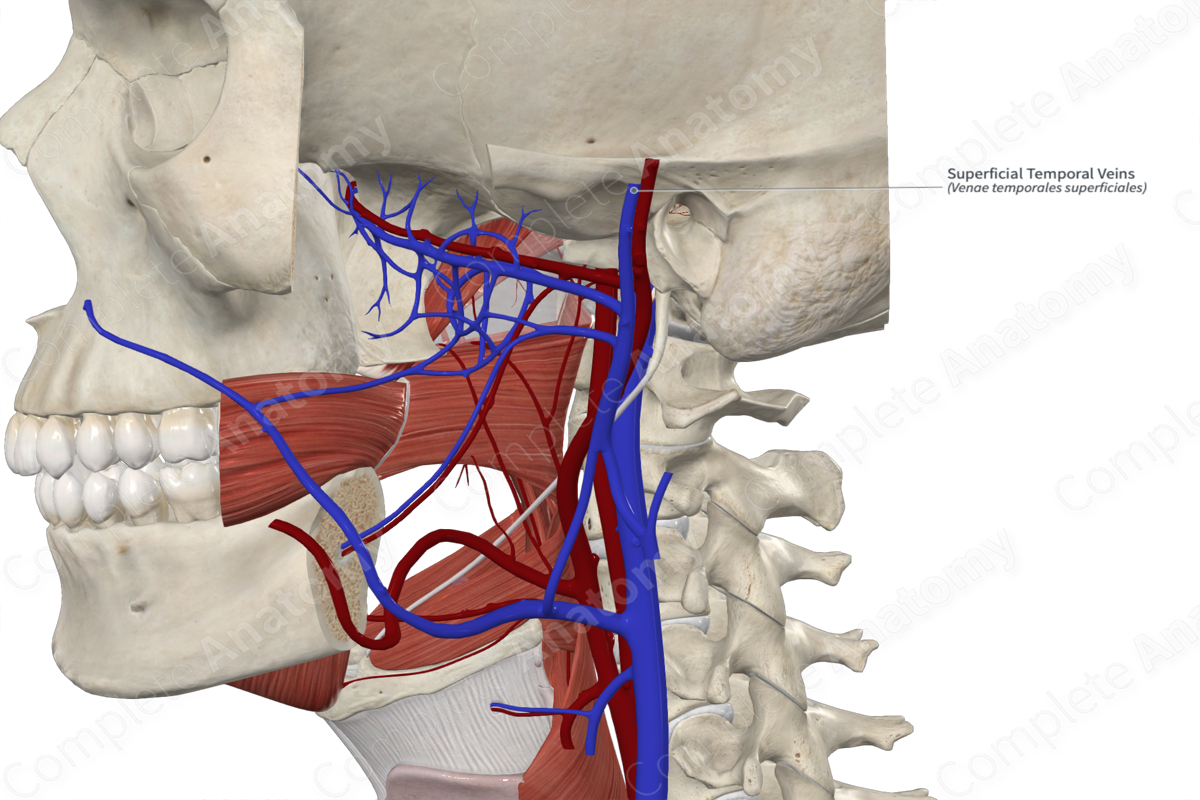
Quick Facts
Origin: Formed by the union of frontal and parietal ramifications.
Course: Descends over the temporal region and into the parotid gland to join with the maxillary vein.
Tributaries: Middle temporal, transverse facial, and anterior auricular veins and branches draining the parotid gland and temporomandibular joint; Communicates anteriorly, posteriorly, and on the vertex with various venous channels.
Drainage: Drains the muscles and skin of the temporal region.
Related parts of the anatomy
Origin
The superficial temporal vein arises from a frontoparietal venous plexus on the side of the head extending all the way up to the vertex. The plexus communicates with various veins anteriorly and posteriorly, and at the vertex with corresponding veins from the other side.
Course
The superficial temporal vein passes laterally from the temporal region over the zygomatic arch and enters the parotid gland. It descends further inside the gland and joins with the maxillary vein to form the retromandibular vein.
Tributaries
The superficial temporal vein receives the middle temporal, anterior auricular, and transverse facial veins. Additional tributaries from the parotid gland and temporomandibular joint may also join.
Structures Drained
The superficial temporal vein drains the muscles and skin of the temporal region.




